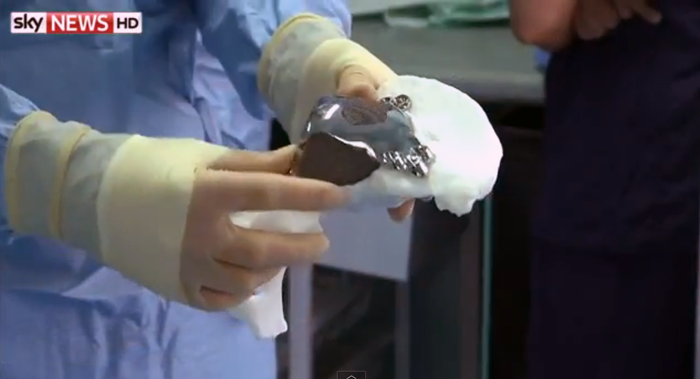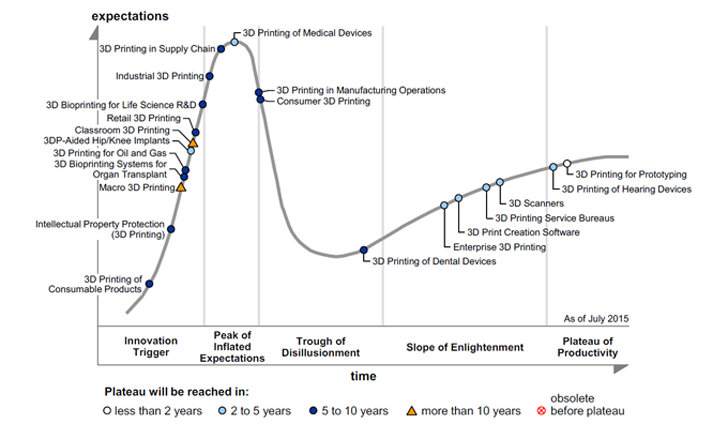Gartner is widely regarded for its ability to analyze technological trends, relying heavily on their now famous Hype Cycle. And the market research firm doesn’t just get into the technology, but the society surrounding it, even predicting that there would be widespread social upheaval in one report. More recently, the firm created a specialized model for outlining specific trends in 3D printing, with the 2015 Hype Cycle for 3D Printing outlining various applications within the industry and their point of maturity versus popular expectations. And, with this tool, they have determined that medical 3D printing has just hit the Peak of Inflated Expectations, meaning that, soon, we’ll no longer be wowed by 3D printing in the medical space, as the tech is legitimately incorporated regularly in specialist medical applications.
Pete Basiliere, research director at Gartner, says of the 3D Printing Hype Cycle, “In the healthcare industry, 3DP is already in mainstream use to produce medical items that need to be tailored to individuals, such as hearing aids and dental devices.” He continues, “All of the major hearing aid manufacturers now offer devices that are personalized to the shape of the customer’s ear. This is evidence that using 3DP for mass customization of consumer goods is now viable, especially given that the transition from traditional manufacturing in this market took less than two years. Routine use of 3DP for dental implants is also not far from this level of market maturity.”


Outside of medicine, however, Gartner believes that there are a number of spaces in which the technology is only two to five years from becoming mature that will, in turn, see 3D printing move from specialty uses to broader usage. These include 3D scanning, service bureaus, and 3D printing software, says Basiliere. With CAD software being made simpler for consumer use, coupled with repositories of 3D printables, consumers have greater access to 3D models. 3D scanners, too, give consumers a wider range of printable options, as they drop dramatically in price. And, because they can use service bureaus to have this objects printed, rather than on a home machine, they can experiment with the technology more and more. Basiliere explains, “Advancements outside of the actual printers themselves may prove to be the catalyst that brings about widespread adoption. Technologies such as 3D scanning, 3D print creation software and 3D printing service bureaus are all maturing quickly, and all — in their own way — have the potential to make high quality 3DP more accessible and affordable.”
The full report can be purchased here, but if you’re looking for the Hype Cycle’s prediction of the future of 3DP bloggers and journalists, you won’t find it. My own divination is that they’re past the peak of inflation and will, hopefully, mature in the next 1-2 years.



